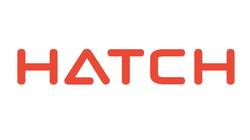Partnership develops algorithms for wind turbine optimisation
| Press release in word format | 13.78 KB | Download | |
| Hatch specialises in design, planning, engineering, project management and construction management services for the power and en | 1.66 MB | Download | |
| Hatch has teamed up with the University of Toronto to develop a new approach that implements generic algorithms and combines noi | 1.64 MB | Download |
In populated areas such as Ontario, Canada, noise management has become the main obstacle in siting and gaining regulatory approval for wind farms.
Hatch Canada Senior Mechanical Engineer for Renewable Power Joaquin Moran says that the noise barrier is compounded by several other challenges in turbine layout, such as: air traffic navigation, conflict with commercial towers and mandatory setbacks from residences, schools, hospitals, settlements and even vacant lots.
All of these factors make it difficult to arrive at a layout that also provides the desired energy capacity, meets landowner requirements and satisfies stakeholder expectations. The crux of the challenge is that, every time a turbine location changes, so does the sound field around it.
Engineers across the wind power industry have turned to mathematical optimisation tools to identify solutions that will produce the highest energy and lowest noise. However, the capabilities of current software tools are limited; there are production tools that address static geometric constraints or acoustic modeling tools that address the sound field. The key to achieving optimal layouts is to merge the strength of these two tool types, explains Moran.
Engineers from Hatch have teamed up with researchers at the University of Toronto to develop a new approach that implements generic algorithms and combines noise and energy optimisation. Currently in the test phase, this algorithm has produced promising results for simultaneously reducing the noise and increasing the capacity of future wind farm sites.
Moran points out that measuring noise can be difficult. The algorithms need to recognise that while certain noise levels may be acceptable to the wind farmer hoping to make a reasonable profit, they may not be acceptable to neighbors who are not harvesting wind energy. This could necessitate having to move a turbine that is situated too close to a neighbour’s property line. However, each time a turbine is moved, compliance and other associated factors come into play.
Noise, wind and compliance are not the only issues affecting turbine placement. Integration into the electrical grid, animal migration routes, shadow flicker, electromagnetic interference and the aesthetics of the installation all has possible implications. If the partnership between the University of Toronto and Hatch succeeds, the design and optimisation algorithms would provide a competitive advantage not only to Ontario’s wind energy industry, but to wind energy industries across the globe.
Hatch specialises in comprehensive design, planning, engineering, project management and construction management services for public and private clients in the power and energy sectors. Hatch’s expertise in the wind power field include wind assessments, feasibility studies, site research, engineering design services, project management, interconnection services, environmental assessment and permitting services, construction supervision and due diligence.
Ends.
Notes to the Editor
There are numerous photographs specific to this press release. Please visit http://media.ngage.co.za and click on the Hatch link.
About Hatch
Hatch supplies process and business consulting, information technology, engineering, and project and construction management to the mining, metallurgical, energy and infrastructure industries.
Hatch Contact
Rashree Maharaj
Hatch Marketing and Communications Manager
Phone: 011 239 5300
Email: RMaharaj [at] hatch [dot] co [dot] za
Web: www.hatch.co.za
Media Contact
Kelly Farthing
NGAGE Public Relations
Phone: (011) 867-7763
Fax: 086 512 3352
Cell: 079 367 7889
Email: Kelly [at] ngage [dot] co [dot] za
Web: www.ngage.co.za
Browse the Ngage Media Zone for more client press releases and photographs at http://media.ngage.co.za

